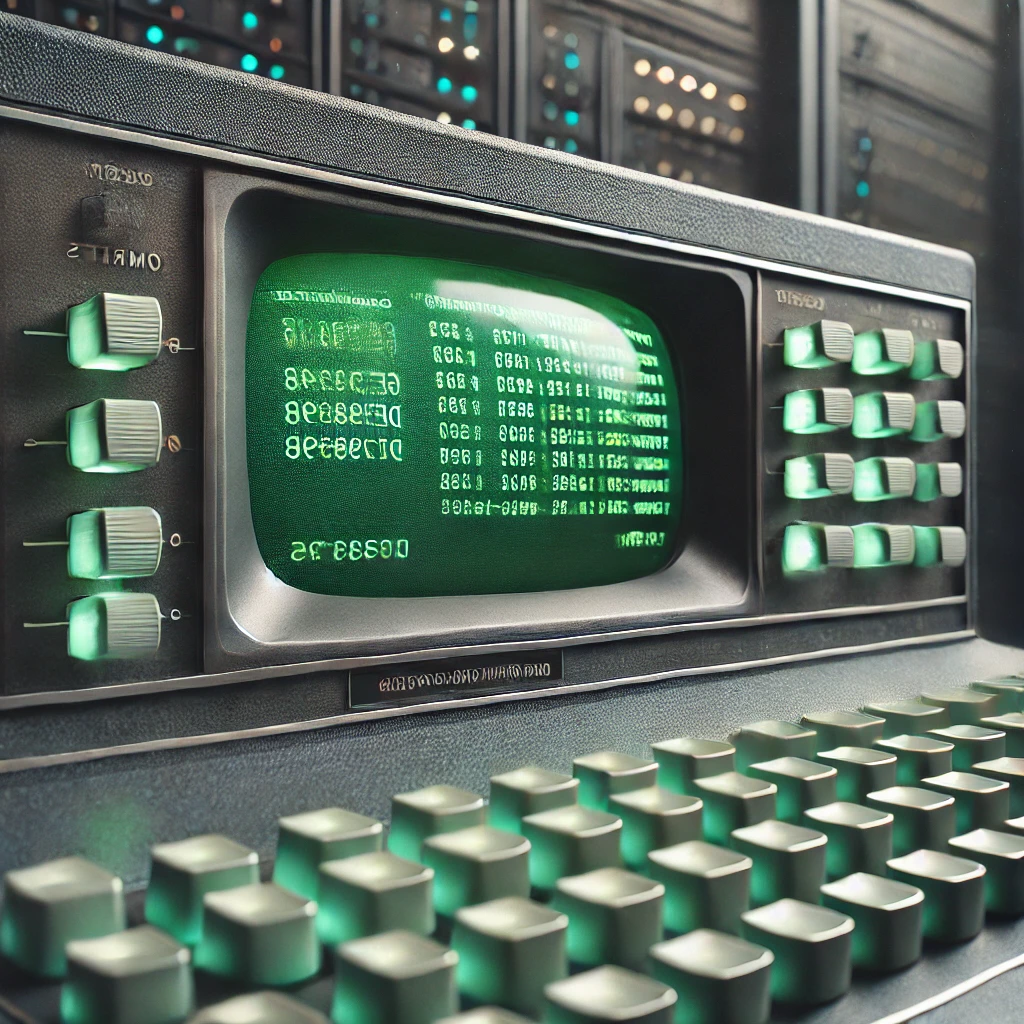Mainframes Aren’t Dead, They’re Just Getting Started (Again)
There’s a joke in the tech world that goes something like this: “Mainframes are like your grandparents — they’ve seen it all, they know how to keep things running, and you only remember how much you need them when something breaks.” And honestly? That’s not far off. But let’s rewind for a second.
The Era of “Everything Else”
The ‘90s and 2000s brought with them a tide of change. Web servers, cloud computing, distributed systems — all newer, shinier, and better suited to the world of apps, clicks, and cat memes. The cool kids flocked to the cloud like moths to a docker container. Startups laughed at mainframes. “Legacy,” they scoffed, as if the word were synonymous with “moldy.”
But guess what didn’t go away? Banks. Governments. Airlines. Hospitals. And guess what was — and still is — running underneath? Yup. The big, steady, unfussy mainframe. Because while your trendy microservice might fall over if someone sneezes on it, the mainframe just keeps humming — 24/7, rain or shine, quarter after quarter, decade after decade.
The Secret Life of Mainframes
Mainframes are the infrastructure you don’t see. They’re like the plumbing in a skyscraper: invisible when it works, catastrophic when it doesn’t.
Consider this:
92 of the top 100 banks in the world use mainframes.
70% of Fortune 500 companies rely on mainframes for core operations.
Mainframes handle 30 billion business transactions per day.
They process 87% of all credit card transactions globally.
If the internet is the nervous system of modern business, mainframes are the circulatory system — moving data and money at speeds and volumes that would make even the flashiest Silicon Valley stack blush. But here’s the real twist: mainframes aren’t just surviving — they’re evolving.
Mainframes Have Entered Their Renaissance Era
Yes, you read that right. The machines once confined to windowless rooms and retro sci-fi aesthetics are undergoing a glow-up. IBM’s latest zSystems — like the z16 — come with:
AI inferencing on-chip
Quantum-safe encryption
Real-time fraud detection
Cloud-native capabilities
Support for containerization, APIs, and modern DevOps tools
In other words, today’s mainframe can talk to your Kubernetes cluster, join your CI/CD pipeline, and keep pace with your React front-end — all while handling 100,000 secure transactions a second without breaking a sweat. And the future? It looks… surprisingly futuristic.
Why the Mainframe Is a Key Player in the Future of Tech
Let’s talk trends: cybersecurity, AI, cloud-native, sustainability. These are the buzzwords of the next decade. Mainframes hit all of them.
Security That Doesn’t Sleep In a world where breaches are measured in how much customer data didn’t get stolen, mainframes offer unparalleled security. We’re talking about hardware-level encryption, logical partitions, and access control so tight it would make Fort Knox feel exposed.
Mainframes are already quantum-safe, meaning they’re preparing for a future where quantum computers could make current encryption obsolete. Your EC2 instance can’t say that.Sustainability Without Sacrifice Mainframes do more with less. One mainframe can consolidate thousands of x86 servers, significantly reducing data center sprawl, energy usage, and carbon emissions. If green tech is the future, the mainframe’s efficiency puts it in the winner’s circle. It’s like replacing a whole fleet of delivery trucks with one futuristic bullet train.
Cloud-Friendly and Hybrid-Ready Contrary to the myth, mainframes don’t live in isolation. They can work seamlessly in hybrid cloud setups, integrating with AWS, Azure, and Google Cloud. You can wrap mainframe capabilities in REST APIs, use Ansible to manage them, and even deploy containerized apps using OpenShift on z/OS. So yes, your mainframe can be besties with your cloud stack.
AI at the Edge of Transactions IBM’s newer mainframes have embedded AI inferencing, meaning they can run AI models in real-time as part of a transaction — like detecting fraud before it completes, not after. That’s like having a bouncer with psychic powers at the door of every financial transaction. Try doing that on a traditional cloud server without latency or cost issues.
Mainframes and the Workforce of the Future
“But who’s going to run all this old stuff?” you ask.
Funny you should mention it.
The workforce is changing. Programs like IBM’s Z Xplore, Broadcom’s Vitality, and nonprofit efforts like EMMA (Expanding Mainframe Modernization & Access) are training a new generation of mainframers — often from underrepresented communities, career changers, and recent grads who want purpose-driven tech work.
These aren’t grumpy old coders locked in a basement. They’re cloud-savvy, open-source fluent, and excited to work on tech that actually matters. Because let’s face it — writing another dating app isn’t quite as rewarding as making sure Medicare checks go out on time.
The Mainframe Isn’t Old. It’s Just Wise.
If tech trends are a fashion show, mainframes are the timeless black blazer: classic, powerful, and always in style when it counts. They’re not trying to be cool. They’re trying to be essential — and succeeding. In a world that moves fast and breaks things, mainframes move right and fix things. So the next time someone says, “Aren’t mainframes dead?” just smile and say, “No — they’re the reason your direct deposit didn’t fail this morning." Because beneath all the APIs, apps, and avatars is a quiet giant, running the world one transaction at a time. And it’s not going anywhere.
